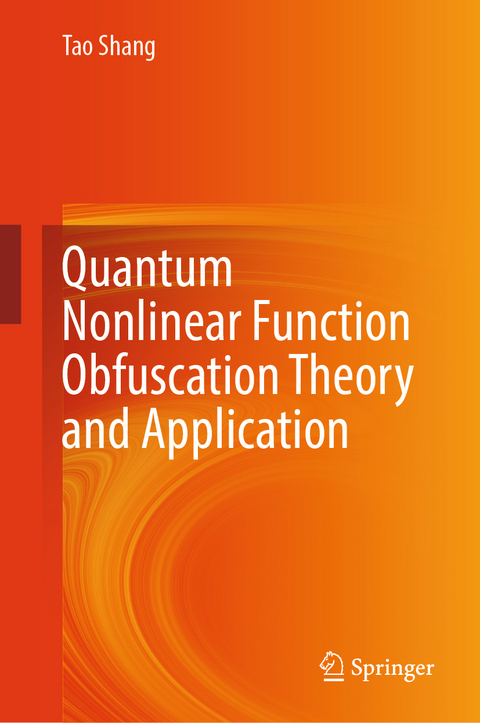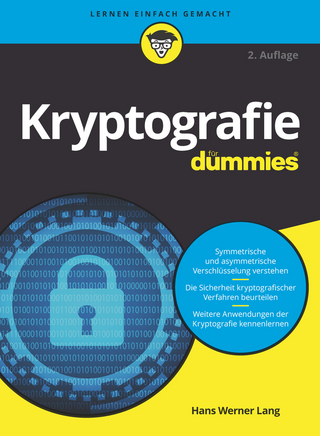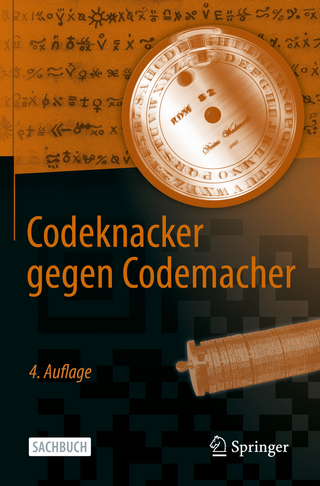
Quantum Nonlinear Function Obfuscation Theory and Application
Springer Nature (Verlag)
978-981-97-6721-2 (ISBN)
- Titel nicht im Sortiment
- Artikel merken
This book summarizes the main research results and preliminaries of quantum obfuscation and systematically introduces quantum obfuscation methods. Quantum obfuscation is an important and cross-cutting research topic in quantum cryptography and quantum computation. Quantum cryptography and quantum computation have made great progress in this century. However, academic research on the theory of quantum obfuscation is still at a blank stage. The author combines the theory of quantum computation and obfuscation and develop the theory of quantum obfuscation. Until now, a series of representative schemes have been proposed. From the viewpoint of quantum nonlinear function obfuscation, the author designs a series of quantum obfuscation schemes by means of combining obfuscation theory with quantum computation. Furthermore, the author describes the quantum cryptographic protocols based on quantum obfuscation. These methods will provide effective tools for the research and application of quantum cryptography.
Tao Shang, Ph.D., is Professor at Beihang University, Beijing, China. He was born on August 11, 1976, and received his Ph.D. degree from Kochi University of Technology, Japan, in 2006. From 2007 to 2009, he worked as Postdoctoral Researcher in the School of Computer Science and Engineering at Beihang University, Beijing, China. Now he is Professor of School of Cyber Science and Technology at Beihang University, Beijing, China. His current research interests include quantum cryptography, quantum computation and quantum network coding. From 2013, attracted by the great charm of quantum obfuscation, he attempted to explore quantum obfuscation in quantum cryptography. In recent five years, he has published more than 40 research papers in international conferences and journals, two books, and received two best paper awards, two second prizes of Beijing Higher Education Teaching Achievement Award, two National Natural Science Foundations of China, one National Key Research and Development Program of China.
Introduction.- Preliminary.- Quantum point obfuscation.- Quantum power obfuscation.- Quantum symmetric encryption.- Quantum asymmetric encryption.- Quantum homomorphic encryption.- Quantum one-way function.- Quantum access control.- Quantum zero-knowledge proof.
| Erscheinungsdatum | 16.10.2024 |
|---|---|
| Zusatzinfo | 16 Illustrations, color; 57 Illustrations, black and white; XVI, 262 p. 73 illus., 16 illus. in color. |
| Verlagsort | Singapore |
| Sprache | englisch |
| Maße | 155 x 235 mm |
| Themenwelt | Informatik ► Theorie / Studium ► Kryptologie |
| Naturwissenschaften ► Physik / Astronomie ► Quantenphysik | |
| Naturwissenschaften ► Physik / Astronomie ► Theoretische Physik | |
| Schlagworte | Quantum asymmetric encryption • Quantum Computation • Quantum Cryptography • Quantum homomorphic encryption • quantum nonlinear function • Quantum obfuscation • Quantum one-way function • Quantum point obfuscation • Quantum power obfuscation • Quantum symmetric encryption |
| ISBN-10 | 981-97-6721-0 / 9819767210 |
| ISBN-13 | 978-981-97-6721-2 / 9789819767212 |
| Zustand | Neuware |
| Informationen gemäß Produktsicherheitsverordnung (GPSR) | |
| Haben Sie eine Frage zum Produkt? |
aus dem Bereich


